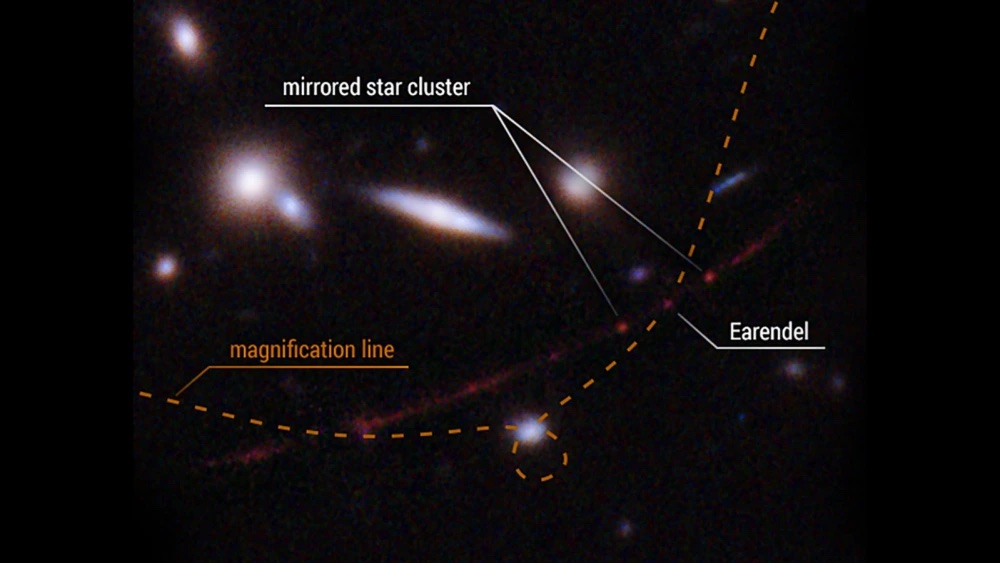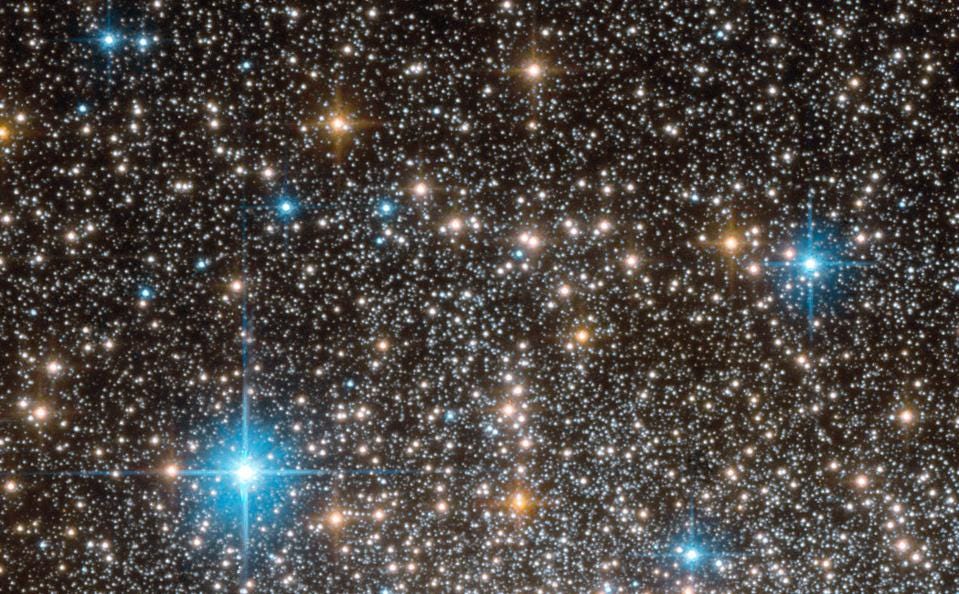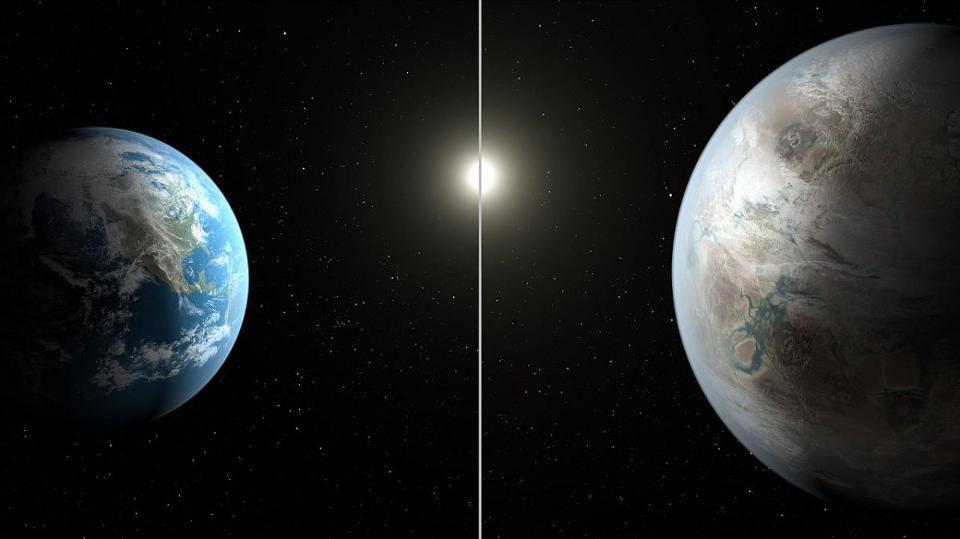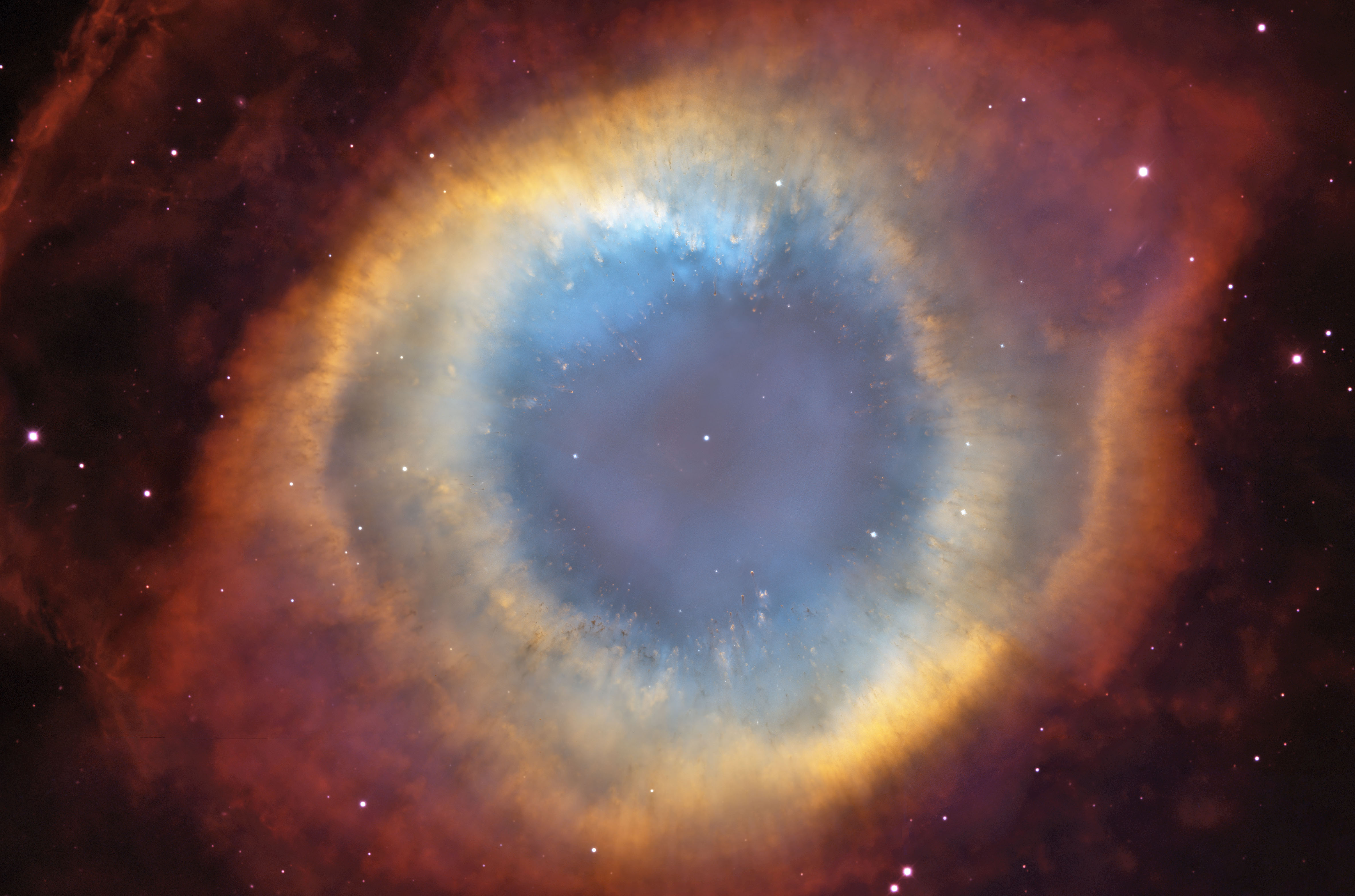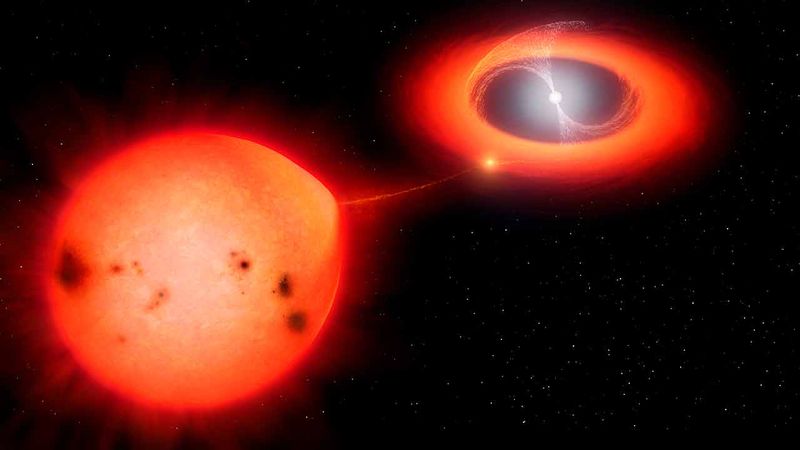Star-formation is truly unstoppable, even with the strongest feedback
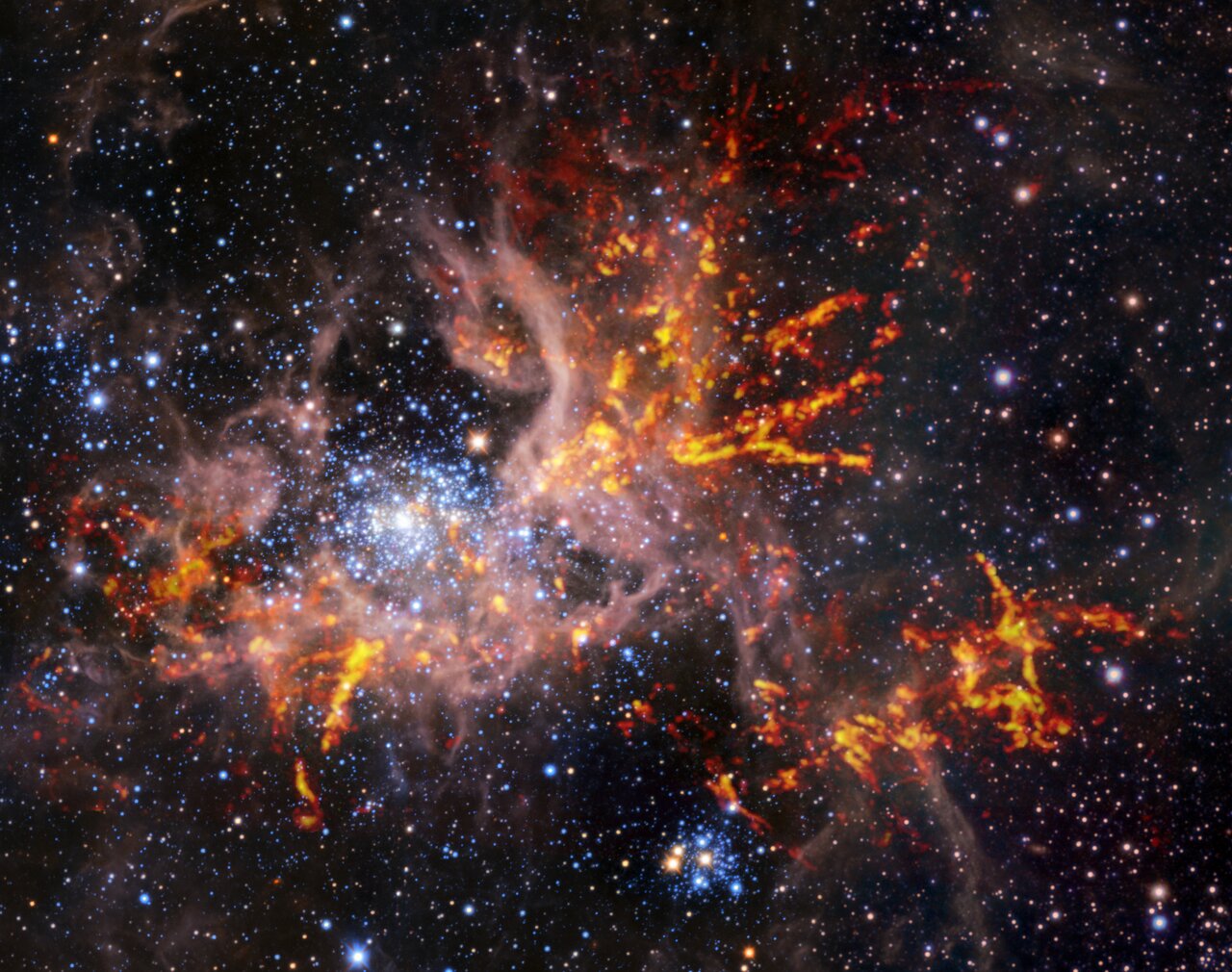
- As the largest star-forming region in the Local Group, the Tarantula Nebula (also known as 30 Doradus) contains hundreds of thousands of new stars, plus material for making even more.
- Although there are lots of dense clumps of neutral matter in that nebula, there are also large populations of hot, energetic stars, and this stellar feedback is thought to bring star-formation to an end.
- Yet, everywhere we look, once there are large concentrations of matter, the feedback isn’t ever strong enough to stop gravity from forming new stars. Here’s what we’ve learned.
Gravity collapses large collections of matter to form new stars, and then the energy emitted from those stars brings star-formation to a grinding halt. At least, that’s the prevailing picture we have of how it should always work. You have to gather enough matter together in one place so that gravitation will cause that matter to contract, fragment, cool, and collapse, triggering a new burst of star-formation and giving rise to a young star-cluster wherever the gas becomes densest. As you form more and more stars, the radiation floods the interstellar environment, boiling the gas away and ending star-formation entirely.
But when does that happen? How many stars do you need, and how long do they need to be shining for, to bring star-formation to an end?
What initially seemed like a simple question turned out to have a far more complicated story behind it: something we learned by looking to the largest star-forming region within the entire Local Group, the Tarantula Nebula. Home to an estimated 800,000 newly-formed stars already, the intense radiation provides more feedback than anyplace else in our cosmic neighborhood. And yet, even with all that, new stars are still copiously forming in the Tarantula Nebula. Here’s what we’ve learned so far.
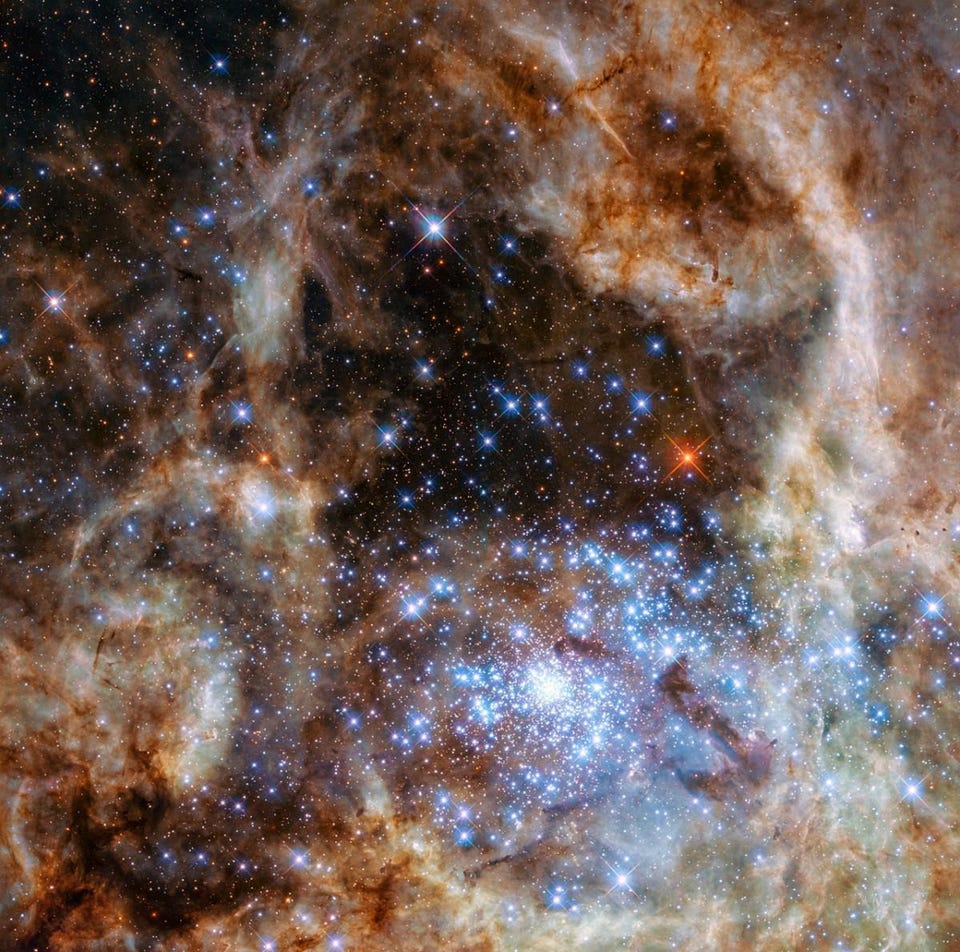
Whenever you look at a star-forming region in optical light — the same type of light that human eyes are sensitive to — you’re going to notice a series of features.
- The new stars will shine brightly, and will appear predominantly blue, as the youngest, hottest, most luminous stars are the most intrinsically blue in color.
- Neutral matter that’s behind the young stars, relative to our line-of-sight, will be illuminated by the reflected starlight, creating a reflection nebula.
- And dense knots of dusty neutral matter, the ones that are in front of the new stars that are forming, will appear as dark blobs, with the densest regions blocking most, up to even all, of the background light.
What you’d probably expect is that there would be a race between these two factors — the radiation from the new, shining stars, and the gravitation of the neutral matter — wherever you have material with star-forming potential. Where there is lots of matter far away from any new stars, you’d expect to form new stars. But wherever you were closest to the new stars, you’d expect feedback from the radiation to dominate, preventing future star formation from occurring.
Only, when we finally looked in depth, that wasn’t what we saw at all.
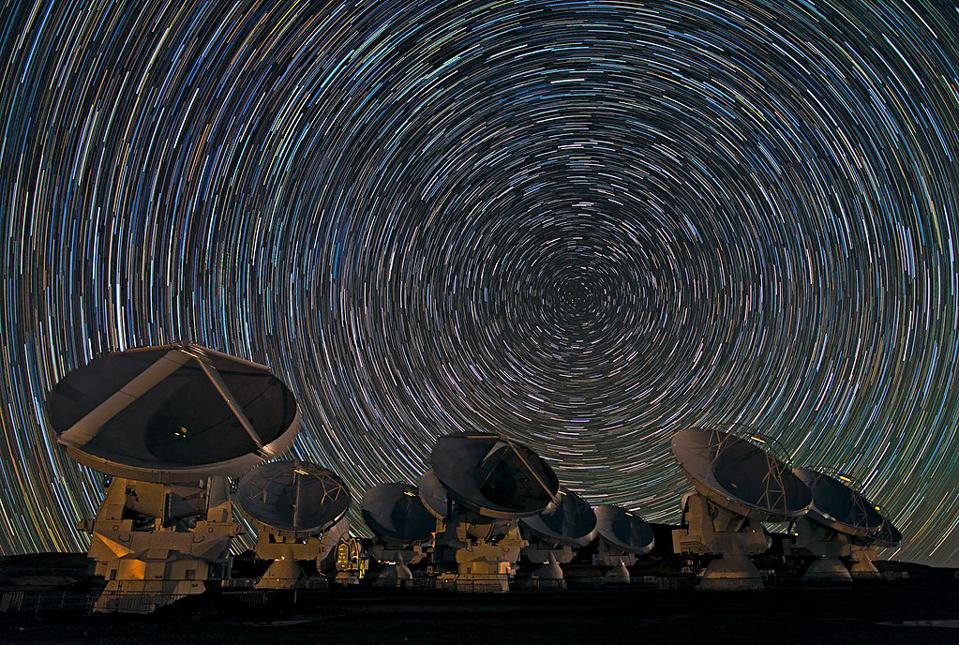
One of the most remarkable astronomical tools we now possess is one that most non-astronomers aren’t really familiar with: ALMA. Short for the Atacama Large Millimeter/submillimeter Array, it’s a network of 66 radio telescopes located in South America. It’s capable of extraordinarily high-resolution observations, even though it “only” has the light-gathering power of the collecting area of the individual dishes combined, its resolution is governed by the space between the dishes. ALMA, without a doubt, was the single most important component of the Event Horizon Telescope, which allowed us to image our only known pictures of a black hole’s event horizon directly.
By pointing ALMA at the Tarantula Nebula, a team of astronomers led by Professor Tony Wong of the University of Illinois was able to map out the presence and properties of a specific species of neutral gas: carbon monoxide. Carbon monoxide is a simple molecule — one carbon atom bound to a single oxygen atom — which emits light at a very specific set of wavelengths. One of those wavelengths falls directly in the range where ALMA is most sensitive, and so by measuring the strength and width of that carbon monoxide emission line, astronomers can determine how much gas is present and how quickly this gas is moving all throughout this region.
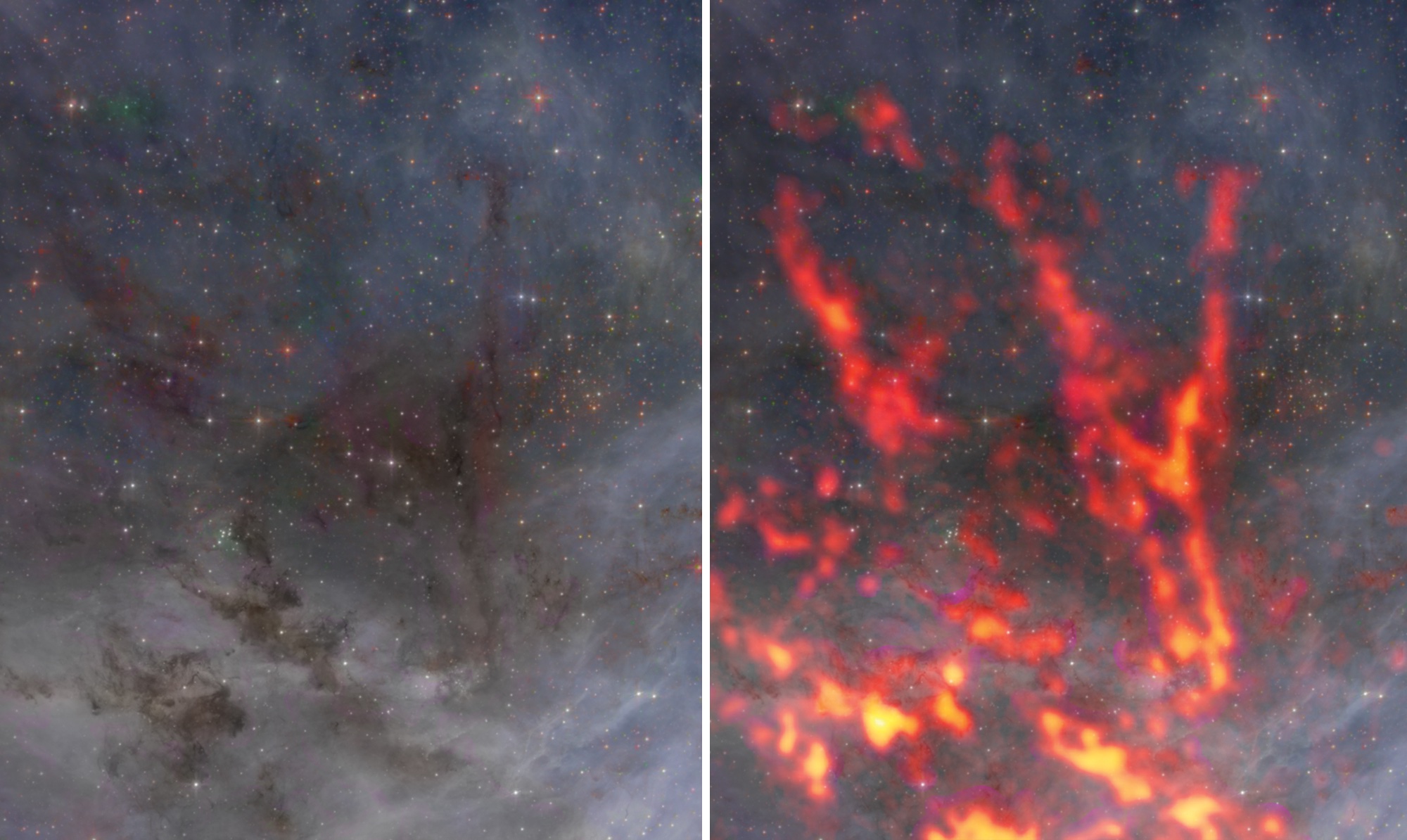
There are a few features that this gas possesses that were expected. It’s expected that this gas would be moving relatively rapidly, as the radiation and winds from young stars should accelerate it and “blow” it across, and potentially out of, this region. Speeds of up to ~40 km/s for this matter was observed, both toward us and away from us, along our line-of-sight.
Another expectation, however, was that the radiation from new stars would shred any clumps of gas that were present, blowing them apart and preventing the formation of new stars. This one, in a great surprise to many, didn’t actually come to pass.
Yes, there are clumps of gas that get shredded, in a sense, by this young stellar radiation. But the gas doesn’t get overwhelmed by this radiation to the point where it becomes too sparse to ever form new stars, not even where the feedback from the radiation on the material is strongest. If you have a sufficiently large amount of mass together in one place, gravity can always defeat feedback, leading to the continued formation of new stars. In many locations within the Tarantula Nebula, even with the strongest feedback, gravitation is still on track to “win” this cosmic contest.

Part of the new analysis involved using the ALMA data to map out the presence and density of gas with the potential to form new stars. Astronomers broke the gas up into three categories:
- the sparsest regions, which have small but non-zero amounts of gas within them,
- intermediate regions, which have significant amounts of gas, but which aren’t yet dense enough to lead directly and immediately to new stars,
- and the densest regions, which are already at least in the beginnings of the process of forming new stars within them.
What was remarkable about the new ALMA measurements was that there were plenty of intermediate and higher density regions that even overlapped with the regions where feedback was strongest. In fact, the only places where we can reasonably have the expectation that feedback consistently can overcome gravitation is in the regions where gas is the sparsest. If you have gas of intermediate density or greater, gravitation is always at risk of being competitive with, or even outcompeting, the radiation from new stars.
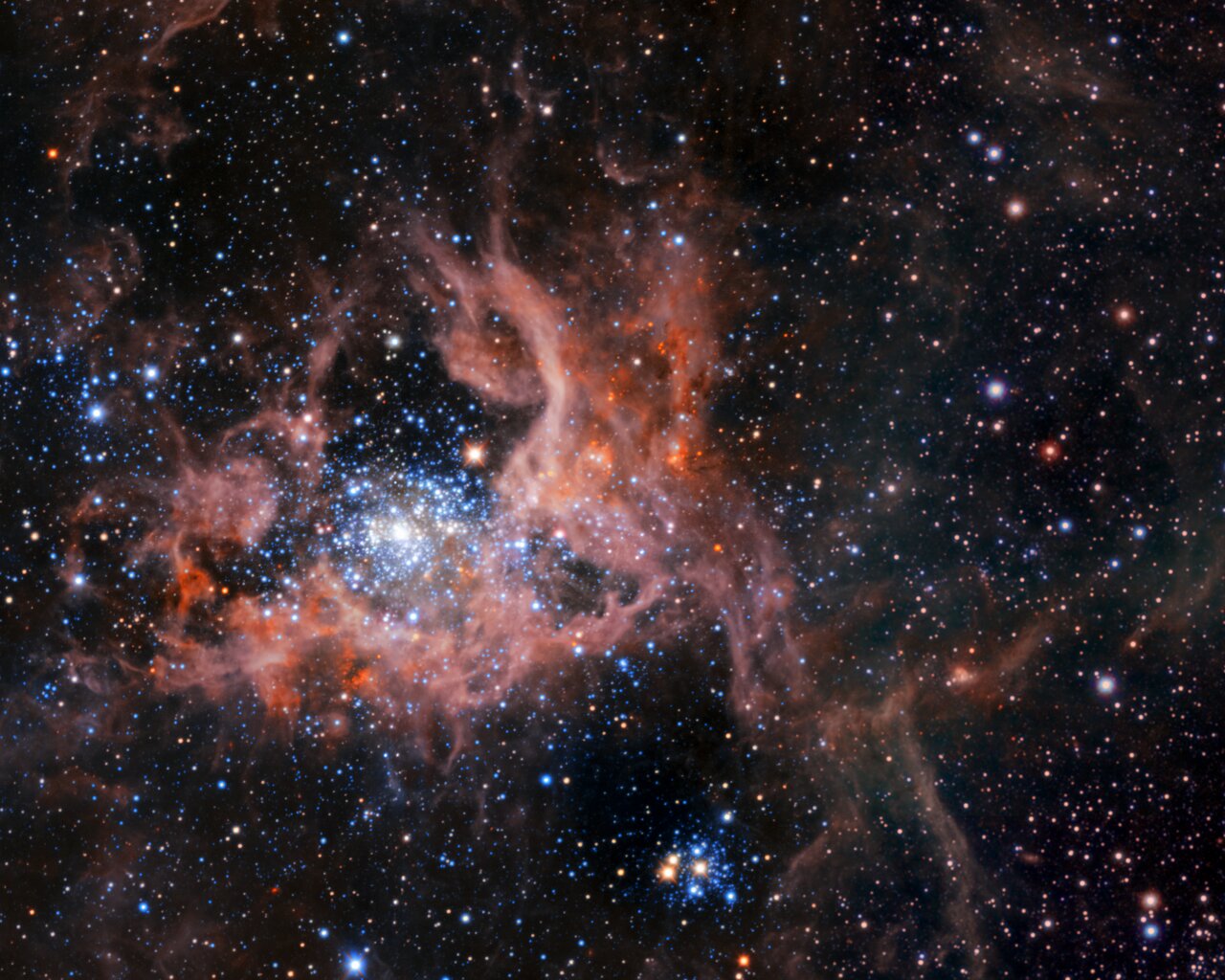
One of the things we were able to see from mapping out the carbon monoxide with ALMA is how filament-like the structure of the gas is. Because we also have exquisite data — including Hubble data — of this same region, we can attempt to overlay the two, and we find that there’s a very good, but not quite perfect, match between these data sets.
There’s a good reason for this! When we look in the optical and see the light-blocking filaments, we’re seeing dust. That dust blocks the background light, and so those filaments we’re seeing are simply silhouettes of neutral, light-blocking matter in front of our light sources. Dust and gas are both neutral matter, so we expect them to live together in the same locations, at least, most of the time. But while optical wavelengths won’t reveal dust that’s located alongside or behind the light sources, ALMA’s gas map of carbon monoxide doesn’t care at all about the gas’s location. Regardless of its “depth” with respect to the light sources, ALMA can pick up the emission signatures of carbon monoxide.

As a result, ALMA is showing us the locations of the gas, which corresponds to locations where we expect new stars to form. In all cases, where the gas is the densest, it isn’t moving the fastest, regardless of whether it’s extremely close to or even right on top of regions where stellar feedback is strongest.
It makes sense, in a way: there’s always going to be some sort of balance between kinetic energy, or the energy-of-motion of matter, and potential energy, which in this environment is driven by the gravitational mass that’s gathered together in one place. Where your potential energy is greatest, even large amounts of kinetic energy could be insufficient to unbind this material, and it will only be moving slowly even with an enormous amount of energy injection. And if it remains bound, all it needs to do to give rise to new stars is cool and collapse.
The sparsest regions of gas, as mapped by ALMA, seem to exclusively be the ones that possess the fastest motions. Once you have more than a certain density of material together in one place, star-formation is all but certain in the near future; even feedback from hot, young stars just a handful of light-years away won’t be sufficient to prevent star-formation from commencing and continuing.
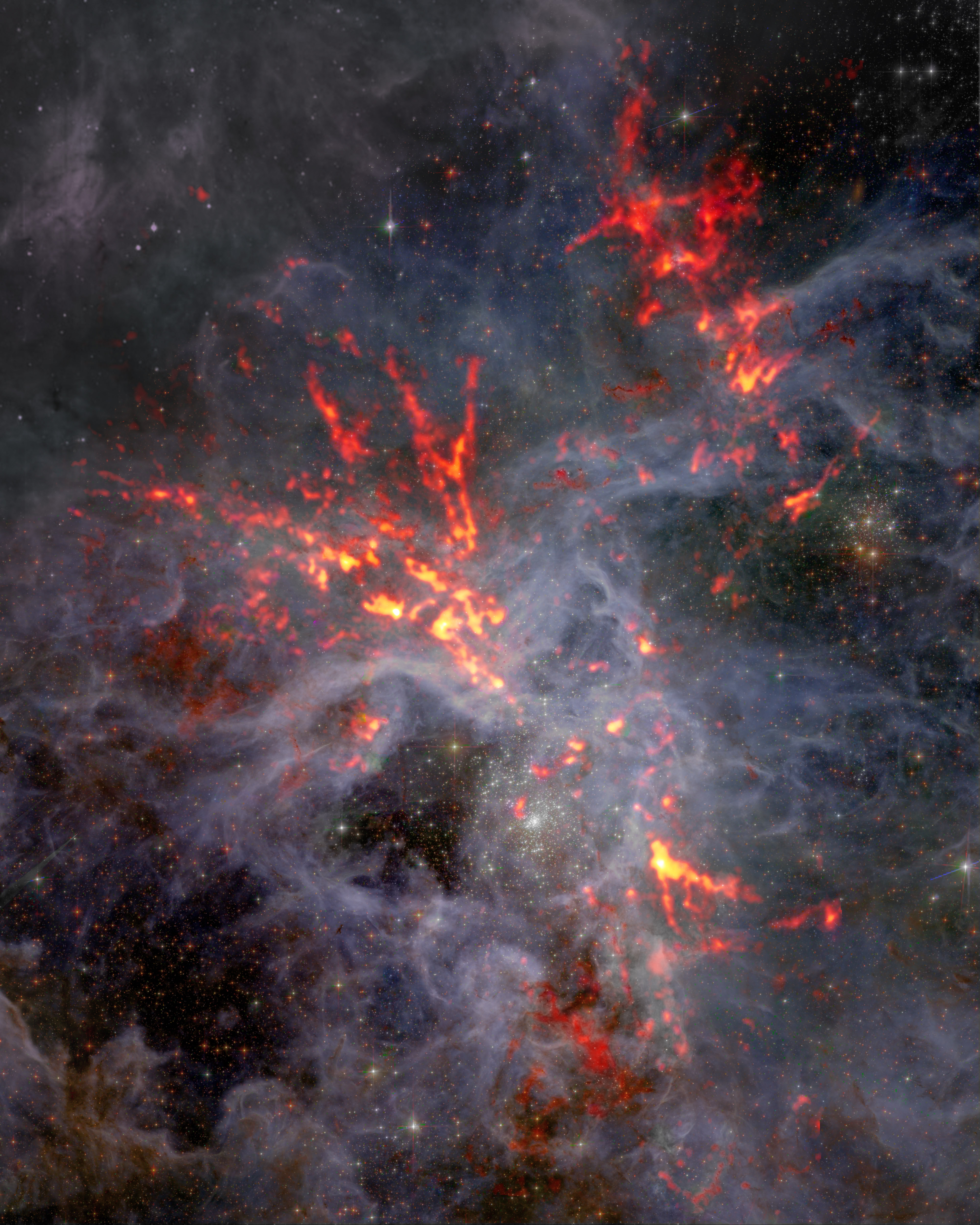
In the words of lead author Tony Wong,
“We were expecting to find that parts of the cloud closest to the young massive stars would show the clearest signs of gravity being overwhelmed by feedback. We found instead that gravity is still important in these feedback-exposed regions — at least for parts of the cloud that are sufficiently dense. […] Our results imply that even in the presence of very strong feedback, gravity can exert a strong influence and lead to a continuation of star formation.”
This is remarkable for a number of reasons. First off, the Tarantula Nebula is the largest, most massive star-forming region in the entire Local Group. It not only contains hundreds of times as many new stars as the typical star-forming regions found within the Milky Way, but it also contains large numbers of stars that are more massive than any we find in our own galaxy. The star cluster R136, for instance, contains hundreds of hot, blue stars, many of which come in at over 100 solar masses. R136a1, the most massive of all, is an estimated 260 times the mass of our Sun, shining with nearly 10,000,000 times our own Sun’s brightness.
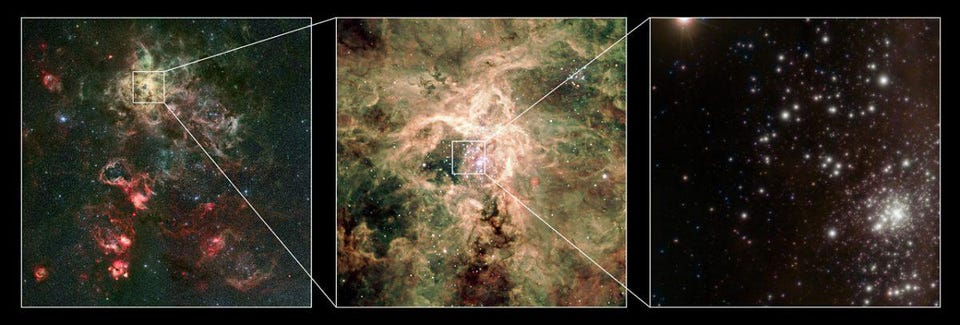
If we want to learn about how stars form, we cannot go too far away; once you go beyond a few hundred thousand light-years, you lose the ability to measure intricate details about how individual stars form. With something as close as the Tarantula Nebula — located a mere 170,000 light-years away within the Large Magellanic Cloud, and alongside the Local Group’s most recently observed supernova, SN 1987A — we can observe the details of stars, gas, dust, different molecular species, and much more from up close.
We can then apply the lessons learned to locations all throughout the Universe that are too far away to measure such details directly, giving us vital information about how the Universe formed most of the stars over its history. While the Universe, today, seems to form stars in mostly small regions within large galaxies, akin to what we find in the Milky Way, the star-formation rate in the ancient past was up to 30 times greater than what it is today. At those early times, it was quite common to have entire galaxies behaving as a single star-forming region, forming millions of stars at a time, with the heaviest stars achieving masses of several hundreds of solar masses. Studying the Tarantula Nebula today is one of our most precious windows into understanding how the Universe formed its stars and grew up.
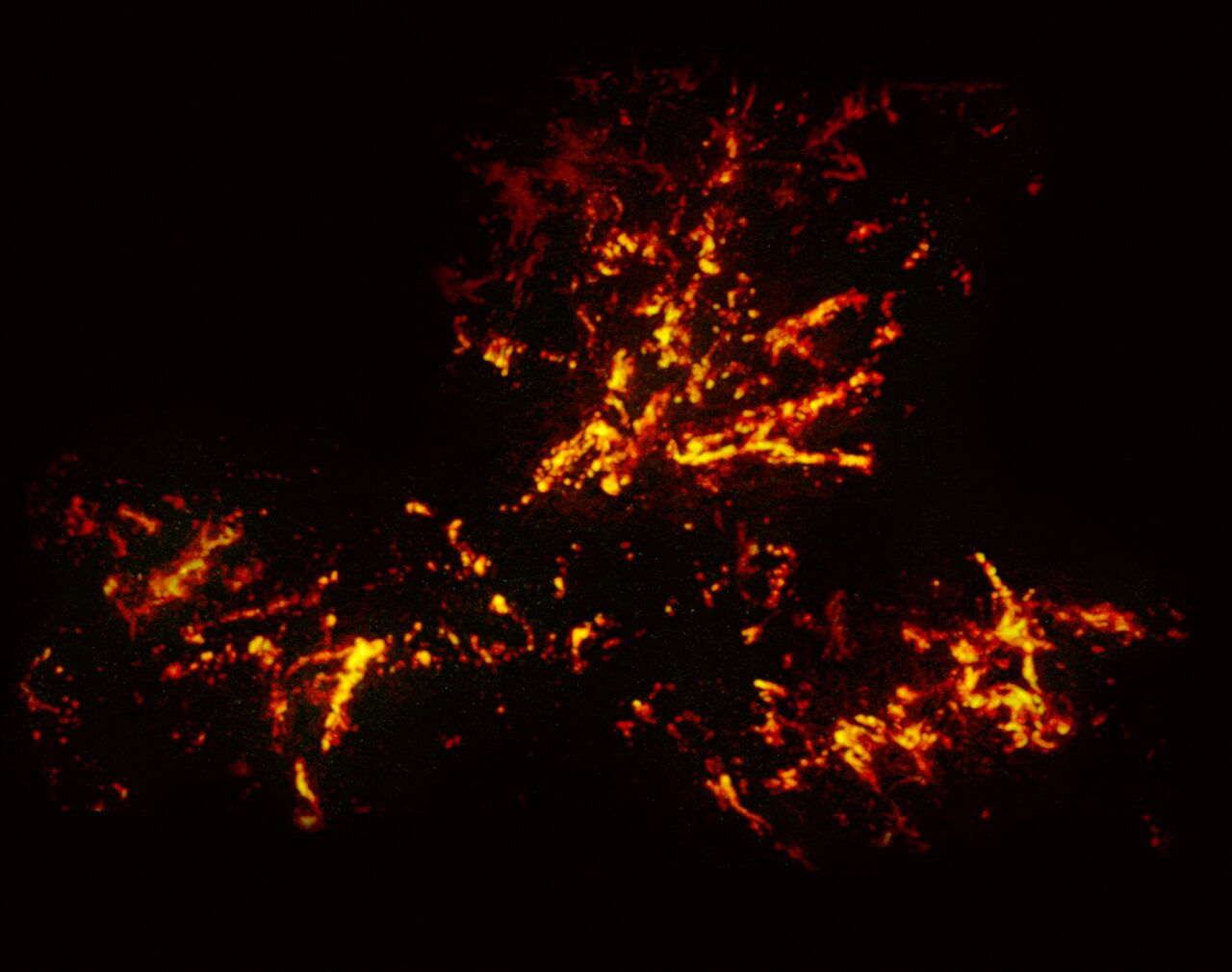
When you conduct a visual inspection of the Tarantula Nebula, it’s easy to see the newest, largest star clusters at the center of the region. But what you might not realize is that star-formation is occurring all throughout the nebula, and that there are filaments, knots, and other clumps of slow-moving neutral matter that dictate where the next generations of new stars are going to be coming from. Seen on its own, the ALMA data mapped out neutral, dense clumps of cool matter: exactly what’s needed to gravitationally collapse and form new stars. Wherever these clumps aren’t too sparse, new stars are likely to arise, even when energetic sources of radiation are close nearby.
Perhaps the greatest lesson from all of this is the reminder of just how powerful and irresistible the force of gravity can be on large, cosmic scales. Radiation, feedback, winds, and other forms of energy injection can certainly, over long enough timescales, bring star-formation to an end, but it doesn’t happen all at once. As long as there’s even a single dense clump of neutral matter remaining, its self-gravitation can overcome even the strongest observable sources of external feedback. As long as these dense collections of neutral matter exist, star-formation is all but unstoppable.
